Donald Trump’s immigration speech yesterday in Phoenix sought to present a more statesman-like and substantive side of the Republican presidential candidate. But it did not escape his signature fearmongering, mischaracterizations, and empty foolish (to use his word) promises. His immigration policy will neither make the United States and Americans safer from crime or terrorism, nor benefit American workers as he promises.
Fantasy wall
The wall he wants to erect along the U.S.-Mexico border remains a fantasy both in execution and in purpose. The U.S.-Mexico border already is tight, and many fewer people manage to cross it secretively than did a decade ago. The level of arrests of those attempting to sneak across is high. In many areas where a wall is not already constructed, physical conditions do not easily allow it and the costs are enormous. Nor can every tunnel or wall breached be detected in time. Already, many remote sensors and other technological assets have greatly increased the border’s visibility, enabling better rapid response by border patrol agents.
Even if Donald Trump’s fantasy of an “impenetrable beautiful” wall could be realized at some acceptable financial cost, smuggling would shift to other methods. Already, drug smuggling groups have adapted to the tighter border by increasing their use of drones to smuggle contraband, and this practice is likely to become more common. And as in Europe, people can be smuggled in by boats.
Neighbors joining forces
Good security along the border requires good cooperation with Mexican law enforcement officials. Both the administrations of George W. Bush and Barack Obama significantly improved U.S.-Mexico border cooperation. Despite Trump’s visit yesterday to Mexico and his proclamations of how much he likes Mexico’s President Enrique Peña Nieto, Trump’s policies will simply alienate Mexico’s government, law enforcement agencies, and people.
Nor can he merely state that he will make Mexico pay for the border even if “they [Mexico] don’t know it yet.” Donald Trump claims that his fence would cost only $12 billion. Other estimates put it at $285 billion, meaning each U.S. taxpayer would have to pay some $900 in new taxes. He proposes that “remittances derived from illegal wages” will pay for the financial costs of erecting the fence. They won’t. Even if there were a way to distinguish and trace legally and illegally-derived remittances (a very complex financial forensics task that remains elusive for banks in preventing money-laundering or terrorism financing), the total level of remittances Mexicans sent home in 2014, including from the very many living in the United States legally, was $23.6 billion. A tiny fraction of the likely cost of the fence. Such empty bluster merely alienates Mexico from cooperating with the United States in securing the border.
Tackling crime the right way
Nor will Trump’s proposal to prioritize hunting for undocumented workers increase U.S. public safety or reduce crime. The Bush administration tried in several ways, including through its Security Cities program: It did not help reduce crime, and local police departments and city governments resented it. They found it counterproductive, diverting them from other anti-crime priorities and alienating local communities. When Trump threatens to cut off what he caricatures as sanctuary cities, he is picking a fight with the many U.S. communities who found the previous iteration of the policies counterproductive. In fact, the opposite is needed: Public safety requires close cooperation with local communities, not racial or ethnic profiling. Protests by African Americans against excessive and heavy-handed policing should have driven that home to Donald Trump.
[P]ublic safety requires close cooperation with local communities, not racial or ethnic profiling.
To reduce violent crime and effectively act against gangs, as Donald Trump also promises, requires reaching out to communities, establishing citizen-police liaison committees, and finding out what crimes actually most threaten local communities, not ostracizing minorities. Police recruitment should focus on increasing minorities group representation, including Hispanic, but also Islamic communities. Such officers will be able to understand local communities and develop their trust. This is particularly important for dealing with lone-wolf terrorist attacks, where the most important “responder” (and often the only source of intelligence that a lone wolf attack is in the making) can be the family, friends, and neighbors of a potential attacker. Beyond specialized counterterrorism units, such as fusion centers and task forces, it is local communities who can know about and prevent a lone-wolf attack by providing ground-up intelligence. Such good community-police cooperation is all the more necessary in smaller cities that can’t necessarily marshal counterterrorism resources on the scale of cities like New York. Thus, no Muslim, Hispanic, or African American communities should be ostracized and mistreated by the heavy-handed policing that Trump advocates.
Two-way economic benefits
Finally, the southern border is not merely a line of security and division, but also an economic membrane and enabler of economic growth. If illegal crossings across empty spaces actually became impossible (not that that would happen), more undocumented workers will be smuggled with legal cargo. But checking every single truck is not possible, else the trade would come to a halt. And that trade contributes significantly to the U.S. economy.
Mexico is the United States’ third largest trading partner after China and Canada. After Canada, the United States exports more to Mexico than any other country. Mexico is the third-highest supplier of U.S. imports. Mexico is the top destination for exports from three U.S. states—Texas, Arizona, and California—and the second most-important market for another 20 U.S. states. Many of the jobs occupied by undocumented workers in the United States are physically-difficult jobs Americans do not want, such as gutting fish or work on farm fields. Fixing immigration is not about mass deportations of people but about creating a legal visa system for jobs Americans do not want. And it is about providing better education opportunities, skills-development and retooling, and safety nets for American workers. And to date, Trump hasn’t offered serious policy proposals on many—if any—of these areas.
Note: Vanda Felbab-Brown, a senior fellow at the Brookings Institution, supports Hillary Clinton’s campaign in her private capacity on a volunteer basis by providing advice on counterterrorism issues and does not speak for the campaign.
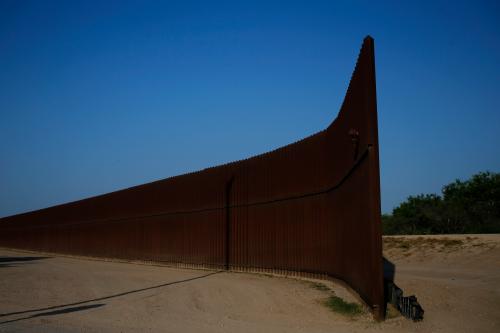
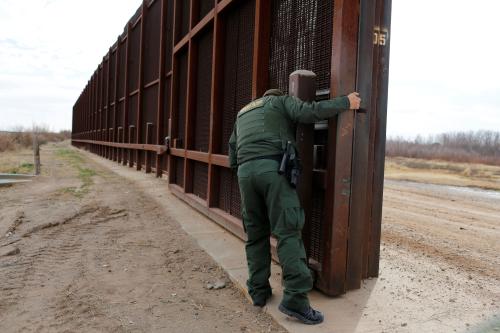
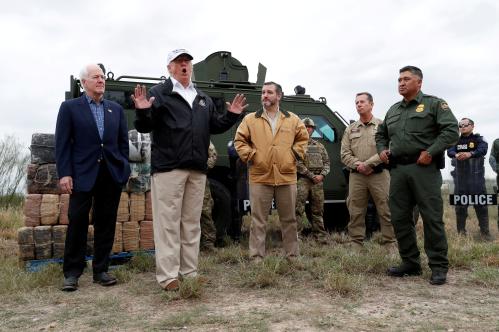

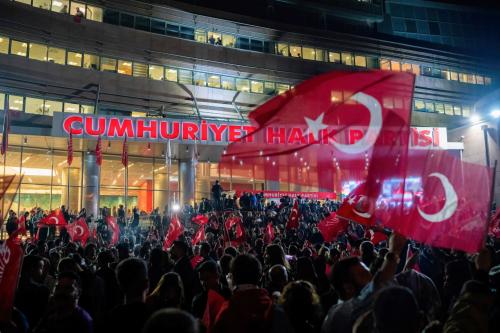
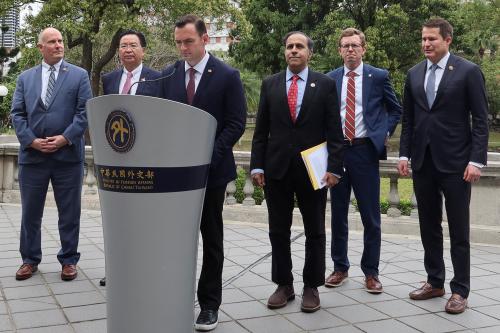

Commentary
A wall against clear thinking on immigration and policing
September 1, 2016